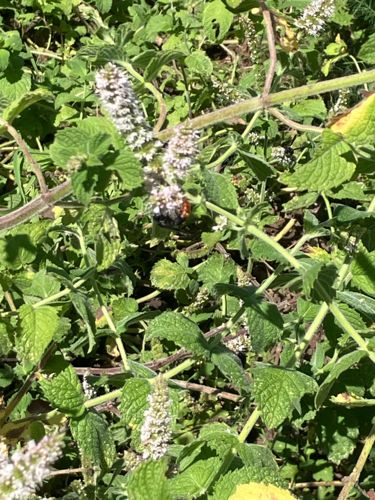Ladybug (specifically a red/orange variety, likely a Convergent Lady Beetle or common ladybug species)
Scientific Name: Coccinellidae (various genera and species, e.g., Hippodamia convergens for Convergent Lady Beetle)
Order & Family: Order: Coleoptera, Family: Coccinellidae
Size: Typically 0.8 to 18 mm (0.03 to 0.7 inches) in length, depending on the species. The one in the image appears to be on the smaller side, likely 5-8 mm.

Natural Habitat
Gardens, agricultural fields, meadows, forests, and other areas with vegetation where their prey is abundant. They are commonly seen on plants infested with aphids.
Diet & Feeding
Primarily predatory, feeding on soft-bodied insects suchals aphids, scale insects, mealybugs, and mites. Adults may also consume pollen and nectar.
Behavior Patterns
Ladybugs are often found on plants where aphids or other soft-bodied insects are present. They are active hunters, especially the larvae which are voracious predators. Adult ladybugs are known to consume large numbers of pests daily. They typically overwinter in sheltered locations, sometimes aggregating in large numbers.
Risks & Benefits
Ladybugs are highly beneficial insects, widely used in biological pest control as they naturally reduce populations of agricultural and garden pests. They pose no significant risk to humans, though some species may bite if handled roughly, which is harmless. Their presence indicates a healthy ecosystem and reduced need for chemical pesticides.
Identified on: 8/22/2025